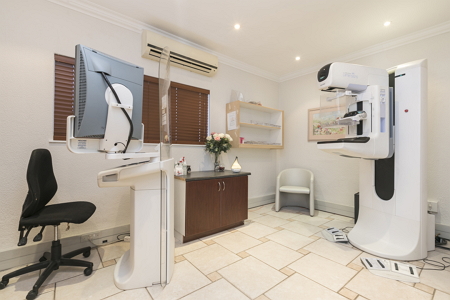A mammogram is a type of X-ray that allows visualisation of the internal anatomy of the breasts.
In traditional 2D mammography, a simple X-ray of the breasts is taken in two positions: CC (cranial-caudal) and MLO (mediolateral-oblique).

The internal structures of the breasts are seen, however, tissue overlap limits the sensitivity of the scan.
3D mammography, correctly referred to as tomosynthesis, provides a detailed cross-sectional scan of the breasts. The breasts are imaged in two positions with multiple X-ray beams sectioning the breast at small intervals, allowing the radiologist to look through overlapping tissue and provide highly detailed anatomy imaging. Detection of small cancers and other lesions is also improved, and, when combined with the correct software, tomosynthesis uses less or the same amount of radiation as regular 2D mammograms.
Tomosynthesis was FDA approved in 2011 for both breast cancer screening and diagnosis but has been used in Europe and other parts of the world since 2008.
The first tomosynthesis digital mammography machine in South Africa was installed at our Linksfield branch in 2012 and has since been upgraded.
The latest machinery and software are implemented at both our Linksfield and Sunninghill branches.
* – CANSA.org
– World Health Organization
– American Cancer Society
– American College of Radiology
– Society of Breast Imaging

